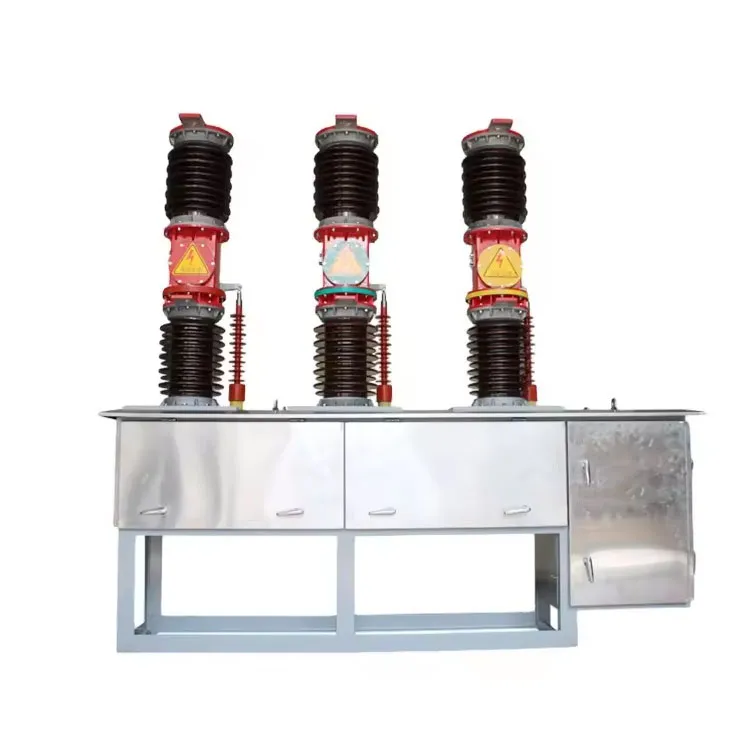Understanding How SF6 Vacuum Circuit Breakers Handle High-Voltage Interruptions
2024-11-15
Circuit breakers are crucial components in modern electrical systems, safeguarding equipment from the dangers of high-voltage surges, short circuits, and electrical faults. The SF6 vacuum circuit breaker (VCB) is a sophisticated device that combines the insulating and arc-extinguishing properties of both SF6 gas and vacuum interrupters. This innovative technology provides excellent protection and reliability in high-voltage systems, making it indispensable in substations, power plants, and industrial applications.
In this blog post, we’ll explore how SF6 vacuum circuit breakers manage high-voltage interruptions, and why the combination of SF6 gas and a vacuum interrupter offers distinct advantages over other circuit breaker technologies.
What is an SF6 Vacuum Circuit Breaker?
An SF6 vacuum circuit breaker is a type of high-voltage circuit breaker that utilizes a combination of SF6 gas (sulfur hexafluoride) and a vacuum interrupter to extinguish arcs when the circuit is opened. These breakers are used to protect electrical circuits from faults by disconnecting the power supply when an abnormal condition occurs, such as an overload or short circuit.
- SF6 Gas: SF6 is a highly electronegative gas that acts as an excellent insulator. It has superior dielectric properties, which means it can withstand high voltages without breaking down.
- Vacuum Interrupter: The vacuum interrupter is a device that interrupts the current within a vacuum. When the contacts inside the interrupter are separated, the vacuum environment ensures that any electrical arcs that form during the interruption are quickly extinguished.
How Does an SF6 Vacuum Circuit Breaker Handle High-Voltage Interruptions?
1. Arc Formation and Extinguishing in the Vacuum
When an electrical fault occurs, such as a short circuit, the current in the circuit will attempt to arc across the contacts of the circuit breaker. In the case of a vacuum interrupter, the arc forms inside a vacuum chamber. Because there is no air in a vacuum, the arc current quickly dissipates and quenches due to the lack of ionization. In a typical atmospheric or air-based circuit breaker, the arc is sustained longer, leading to higher wear and tear on the contacts.
The vacuum interrupter is highly effective at extinguishing arcs, as the dielectric strength of a vacuum is significantly higher than that of air, making it more efficient in dealing with high-voltage interruptions.
2. SF6 Gas Enhances Insulation and Current Interruption
SF6 gas plays a dual role in an SF6 vacuum circuit breaker. Firstly, it provides excellent insulation between the high-voltage contacts when the breaker is in the closed position. Secondly, during the interruption of the circuit, SF6 absorbs the energy released by the arc. The gas can quickly recover and restore its insulating properties once the arc is extinguished, which allows the circuit breaker to handle repeated operations without degradation in performance.
The combination of SF6 and vacuum interrupters allows for efficient and reliable high-voltage arc interruption while maintaining the integrity of the circuit breaker’s contacts and components.
Advantages of SF6 Gas and Vacuum Interrupters in High-Voltage Interruptions
1. Superior Arc Quenching
One of the key advantages of using SF6 in conjunction with a vacuum interrupter is the rapid extinction of arcs. When the contacts inside the interrupter separate, the vacuum environment effectively extinguishes the arc, preventing damage to the contacts and other components. The SF6 gas helps by absorbing the energy of the arc and ensuring that the dielectric properties of the gas remain intact, even under high stress.
2. Reduced Wear and Tear on Contacts
The combination of SF6 gas and a vacuum interrupter minimizes the wear and erosion of contacts that is typically seen in air or oil-based circuit breakers. In traditional breakers, arcs can burn through the contacts, requiring more frequent maintenance. In SF6 vacuum breakers, the contact surfaces last longer, which reduces operational costs and downtime.
3. Enhanced Safety
SF6 gas is non-flammable and chemically stable, providing an extra layer of safety in high-voltage applications. Its insulating properties ensure that electrical faults are quickly isolated without the risk of sparking or causing fires. Additionally, vacuum interrupters are inherently safe because they do not rely on combustible materials or liquids, reducing the risk of fire or explosion.
4. Compact Design
The combination of SF6 and vacuum interrupters allows for a more compact circuit breaker design. Traditional circuit breakers that use air or oil as an arc-quenching medium are larger and bulkier, requiring more space in substations. SF6 vacuum circuit breakers are more compact, making them ideal for areas where space is limited, and reducing the cost of installation and maintenance.
5. High Reliability and Low Maintenance
SF6 vacuum circuit breakers require minimal maintenance compared to other high-voltage breakers. The sealing properties of SF6 gas prevent contaminants from entering the circuit breaker, and the vacuum interrupter has no moving parts that are exposed to wear. As a result, these circuit breakers can operate reliably for extended periods without the need for frequent service or part replacements.
SF6 vacuum circuit breakers are highly effective at handling high-voltage interruptions due to the combination of SF6 gas and vacuum interrupters. The use of these technologies ensures that arcs are quickly extinguished, reducing wear on contacts and improving safety. The efficiency of arc-quenching, the compact design, and the low maintenance requirements make SF6 vacuum circuit breakers an ideal choice for modern electrical grids and substations. As the demand for high-performance, reliable, and low-maintenance equipment continues to grow, SF6 vacuum circuit breakers will undoubtedly remain a cornerstone of electrical protection systems.



